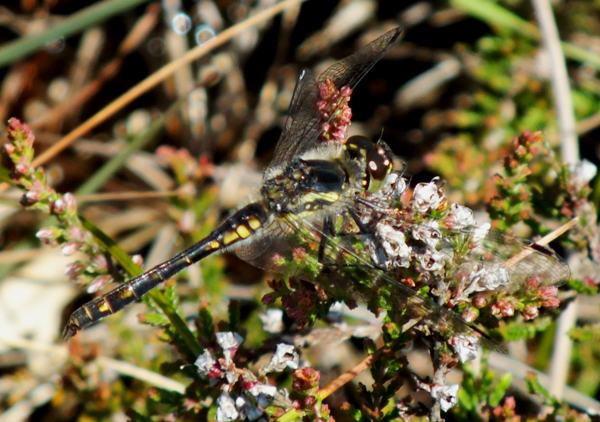Brachytron pratense - Hairy Dragonfly
Phylum: Arthropoda - Class: Insecta - Order: Odonata - Family: Aeschnidae

Description
The Hairy Dragonfly is a medium-sized (typically 5.5cm long), hawker distinguished by its hairy thorax and early emergence. The male is predominantly blue. Females have browner bodies with yellowish spots, and their eyes are brown rather than blue.
Distribution
The Hairy Dragonfly is most common in central and eastern England and more scattered and much less common in other parts of England and in Wales. This species is scarce in Ireland (where it is mainly recorded in the north) and even more so in Scotland.
Habitat
The Hairy Dragonfly favours heavily-vegetated fens, marshes, ditches, ponds, lakes and canals.
Lifecycle
Hairy Dragonflies are the first of the hawkers to emerge. They can be seen on the wing from early May through to late July. The female lays her eggs in summer, stabbing her ovipositor into submerged marginal vegetation. The eggs lie dormant through the winter months and then hatch in the following spring.
Hairy Dragonfly nymphs (naiads) feed on small invertebrates including the nymphs and larvae of other aquatic insects.
Excited at the prospect of flyfishing? So are we, and we're pretty sure you would find the Winding River Mystery trilogy of action-packed thrillers gripping reading too. Dead Drift, Dead Cert, and Dead End are Pat O'Reilly's latest river-and-flyfishing based novels, and now they are available in ebook format. Full details on our website here...
Buy each book for just £4.96 on Amazon...
Please Help Us: If you have found this information interesting and useful, please consider helping to keep First Nature online by making a small donation towards the web hosting and internet costs.
Any donations over and above the essential running costs will help support the conservation work of Plantlife, the Rivers Trust and charitable botanic gardens - as do author royalties and publisher proceeds from books by Pat and Sue.
